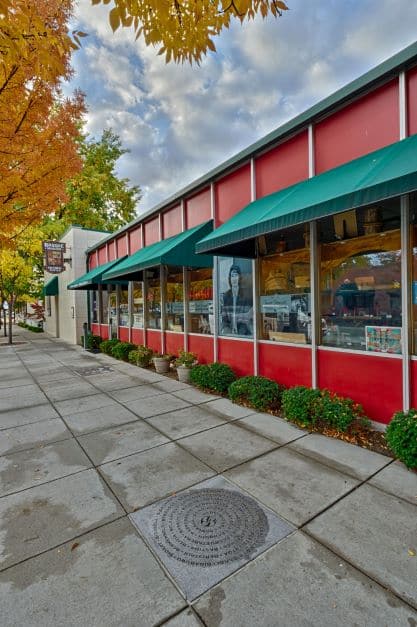
The 2023 AASLH Annual Conference will be held in Boise, Idaho, September 6-9, 2023. In this post, Annie Gavica gives an overview of the “Basque Block,” the center of Boise’s large Basque population and a unique part of the city’s diversity. Session proposals for next year’s conference are now being accepted. The deadline is December 9. Use the button at the bottom of this post to submit a proposal.
By Annie Gavica, Executive Director, Basque Museum & Cultural Center, Boise, Idaho
“Meet you at the Basque Block!” is a phrase commonly heard these days in Boise, Idaho and one that directs citizens, tourists, and others in the capital city to a place that’s truly unique.
One of the first plotted areas of the city, Grove Street was home to early, prominent Boise families, but as time moved on and the streetcar system was developed, the family names of Moore, Cartier, and Redway were replaced by names like Letemendi, Yribar and Arregui.
The Cyrus Jacobs/Uberuaga House, built in 1864 and used as the Jacob family home for forty years, began being rented by Basque families beginning in 1910. The Uberuagas purchased the home in 1928 and operated it as a boarding house until 1969. The home has been restored and is the primary artifact of the Basque Museum. Literally thousands of people pass through its doors each year to get a glimpse of what the boarding house life must have been like in its heyday. Two doors down the street the Anduiza family built a large hotel-style boarding house in 1914 with a full fronton inside. It was purchased in 1993 by Richard Hormaechea and Adelia Garro Simplot who wanted to save the building. Businesses now occupy the upper floor rooms that were the bedrooms while the court is used many times per week by members of the Boise Fronton Association for mostly pala and an occasional handball game. A Basque band stores its
equipment and practices in a couple of the lower rooms and the Museum is allowed to give tours and have students and guests give a try at playing esku pilota, or handball.
 The number of boarding houses declined as fewer herders came from the Old Country, but there was still a need for a place to meet. The Basque Center, built in 1951 at 601 Grove, has been just that place. Home to hundreds of dinners, dances, wedding receptions, funeral gatherings and more games of mus than one could count, it’s also been home to the Oinkari Basque Dancers, Boiseko Gasteak Basque Dancers, and Txant xangorriak music group. It has filled a necessary niche in the Basque community, a place to preserve and celebrate their culture.
The number of boarding houses declined as fewer herders came from the Old Country, but there was still a need for a place to meet. The Basque Center, built in 1951 at 601 Grove, has been just that place. Home to hundreds of dinners, dances, wedding receptions, funeral gatherings and more games of mus than one could count, it’s also been home to the Oinkari Basque Dancers, Boiseko Gasteak Basque Dancers, and Txant xangorriak music group. It has filled a necessary niche in the Basque community, a place to preserve and celebrate their culture.
The Basque Museum & Cultural Center was established in 1985 in the Jacobs/Uberuaga House with the goal to preserve, promote and perpetuate Basque history and culture with one of its primary functions being educational outreach. It acquired the building next door and established the main gallery, store, offices and archives there beginning in 1993. In 1990 the Museum acquired the Cub Tavern and within two years Dan Ansotegui had opened Bar Gernika Basque Pub & Eatery, a quaint place offering Basque and American fare. Jeff May took over at the helm of Bar Gernika in 2008. In 1999 Dan opened The Basque Market, and that too continues today, now operated by Tony and Tara Eiguren, offering wines, foods, cooking classes, and catering Basque food to gatherings within the community. Leku Ona, a full-course Basque restaurant, opened its doors in late 2005, in what was the Belaustegui boarding house and Chico Club. It offers savory traditional dishes with patio, banquet, and outdoor dining areas.
In the summer, as you round one of the corners, you’ll generally hear the sound of glasses clinking, people chatting, and a laugh or a heated discussion or two. You’ll smell garlic wafting off the ethnic fare being served from bustling kitchens to café-style dining tables on the street, and the pungent smell of flowers welling out and over the many pots on the street or hanging from every building. This is the Basque Block. It’s a place that’s been built over time, with the efforts of many people from diverse backgrounds and cultures. It’s a wonderful gathering place for Basques and non-Basques alike and is now an important piece in the fabric of what is Boise.



